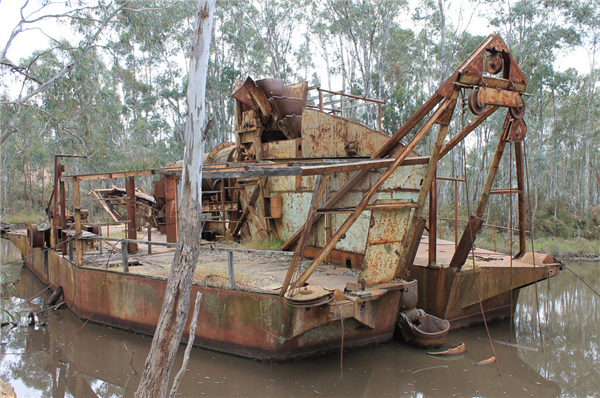
Old mining equipment Maldon, Victoria. Image by Mertie.
A new law aimed at exposing graft in the mining and oil and gas sectors could have some interesting consequences for Canadian companies doing business overseas or foreign companies doing business in Canada.
For one, it could put Canadian exploration companies in conflict with the laws of some of the countries they do business in, according to Keith Chatwin, a partner with the Canadian securities law firm Stikeman Elliott LLP.
In Canada, it could give Canadians a better idea of how much First Nations are receiving through benefits agreements signed with large oil and gas companies.
The new Extractive Sector Transparency Measures Act was officially brought into force June 1, although the reporting on payments to First Nations is being deferred for two years.
First Nations benefits agreements are usually confidential. Enbridge Inc. (TSX:ENB), for example, has claimed it has signed benefits agreements with 60% of the First Nations along the proposed Northern Gateway pipeline corridor. But it has never revealed which First Nations or stated how much the agreements are worth.
The new regulations – which are still being worked out – might continue to guard that confidentiality. But the “quantum” of what mining and oil and gas companies will be paying to First Nations will have to be reported publicly every year.
“The public gets to see the quantum of how much is being paid and to whom – which in my own view will blow people’s minds,” Chatwin said. “There are a lot of financial arrangements that go on which are not publicly disclosed in quantum at all.”
The public got a hint of how much First Nations benefits agreements can be worth when the Lax Kw’alaams Band rejected a $1.2 billion offer from Petronas as part of a benefits package for supporting the Pacific NorthWest LNG project.
The new act will require publicly traded mining and oil and gas companies to annually report any payments of $100,000 or more made to any level of government, including First Nations, or government official.
According to a Fasken Martineau brief, payments that must be reported include taxes, royalties, fees, bonuses, dividends and infrastructure improvement payments. Failure to comply could net fines of up to $250,000 per day.
“The powers of the minister in the act are huge,” Chatwin said. “If they think you’re not complying or you haven’t disclosed something, they can effectively come into your place of business, your place of residence, go through anything they want, seize anything they want in conjunction with trying to enforce that act. So get ready.”
The act applies to publicly listed Canadian companies doing business in Canada or abroad. It also applies to foreign companies that have assets in Canada and do business here.
Smaller junior mining and exploration companies are off the hook, because the new act applies only to companies that meet two of three criteria: a workforce of 250 or more, $20 million in assets or $40 million in revenue.
Most junior exploration companies don’t have head counts that high, and most don’t generate revenue.
The first annual reports will be due 150 days after a financial year ends. For example, companies with a December 31, 2016, year-end will need to file their first annual report on May 30, 2017.
While the first reports aren’t due until 2017, Chatwin said companies need to start preparing now.
“You’re not going to have to deal with this till 2016, but there’s a whole bunch of recording of those payments that you need to do internally to be prepared to report when you’re required,” Chatwin said. “So you better be keeping records.”
Although the new law adds to the accounting and reporting burden of publicly listed companies, Gavin Dirom, CEO of the Association for Mineral Exploration BC, said the new disclosure laws might help curb corruption and improve Canada’s brand abroad.
Although some companies might be guilty of greasing the tracks with payments to government officials to get a project approved, sometimes it’s the reverse: government officials demanding payments.
Creative Commons image by Mertie